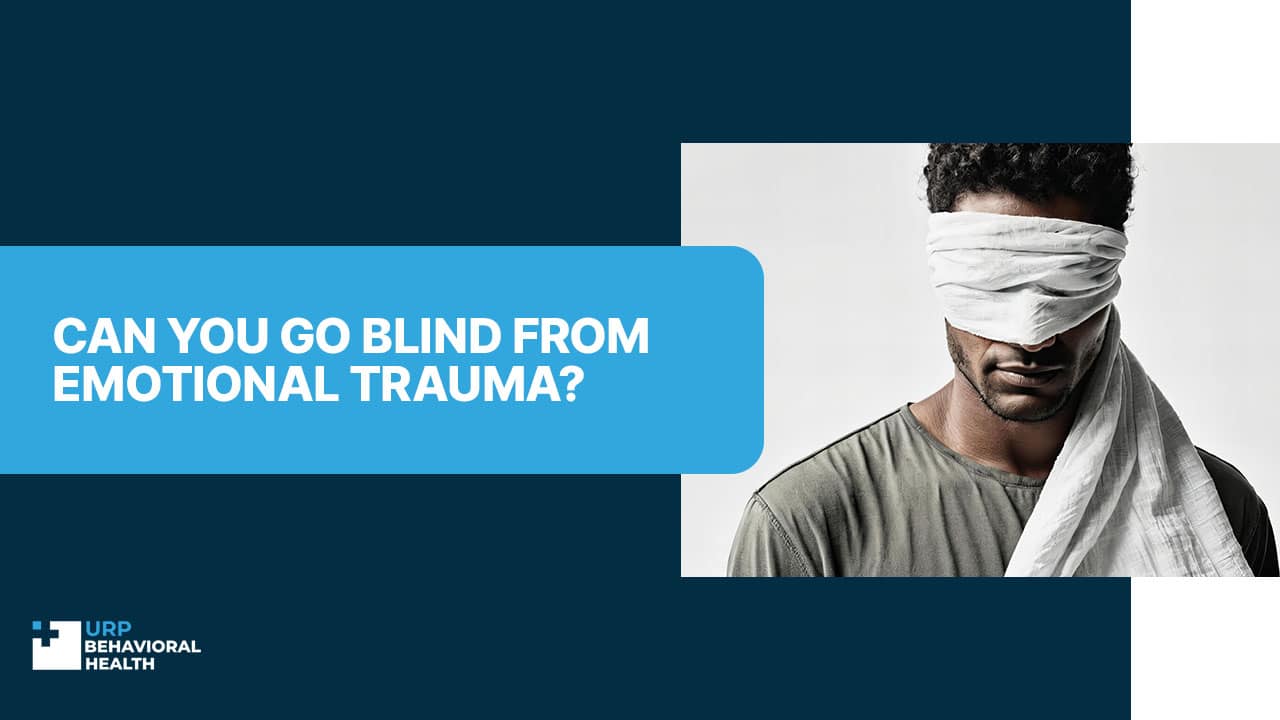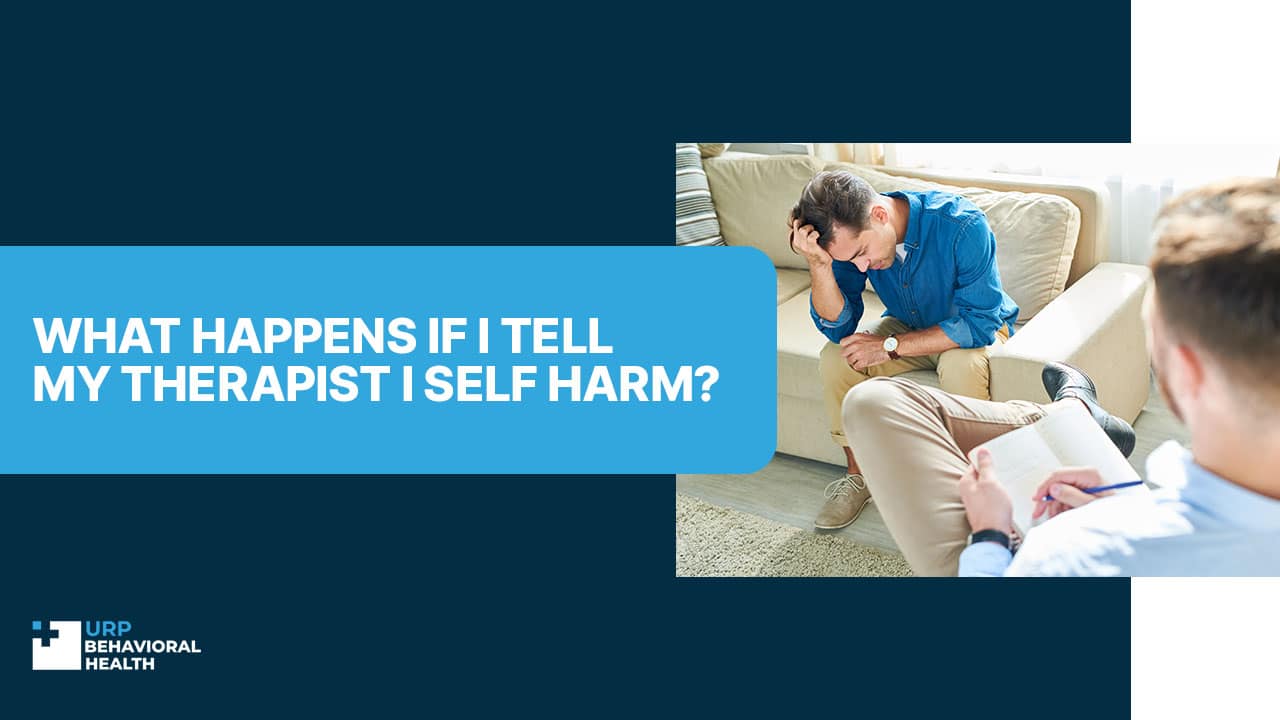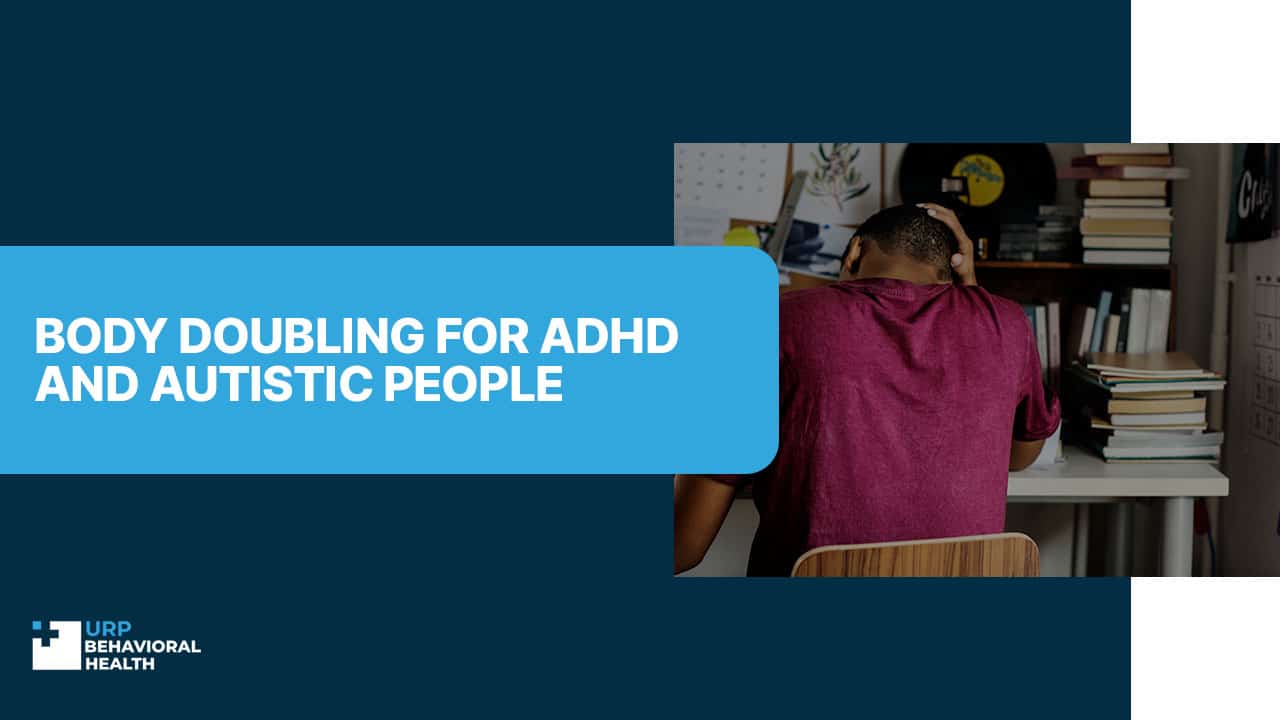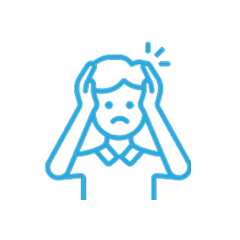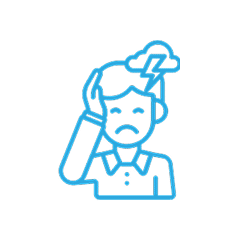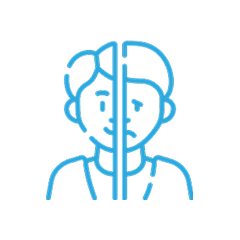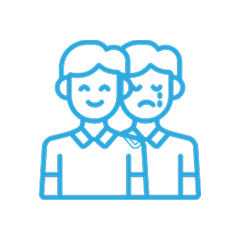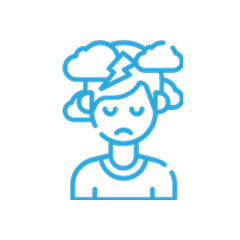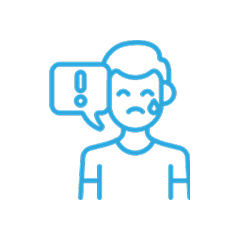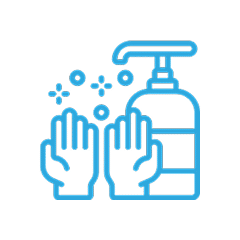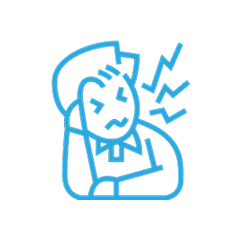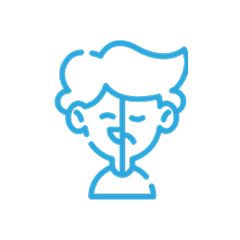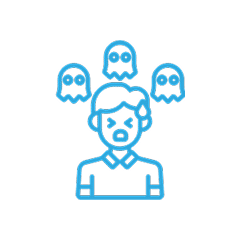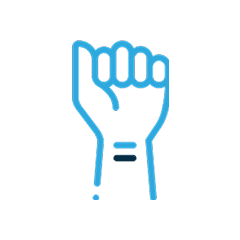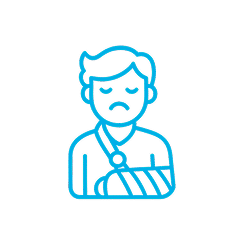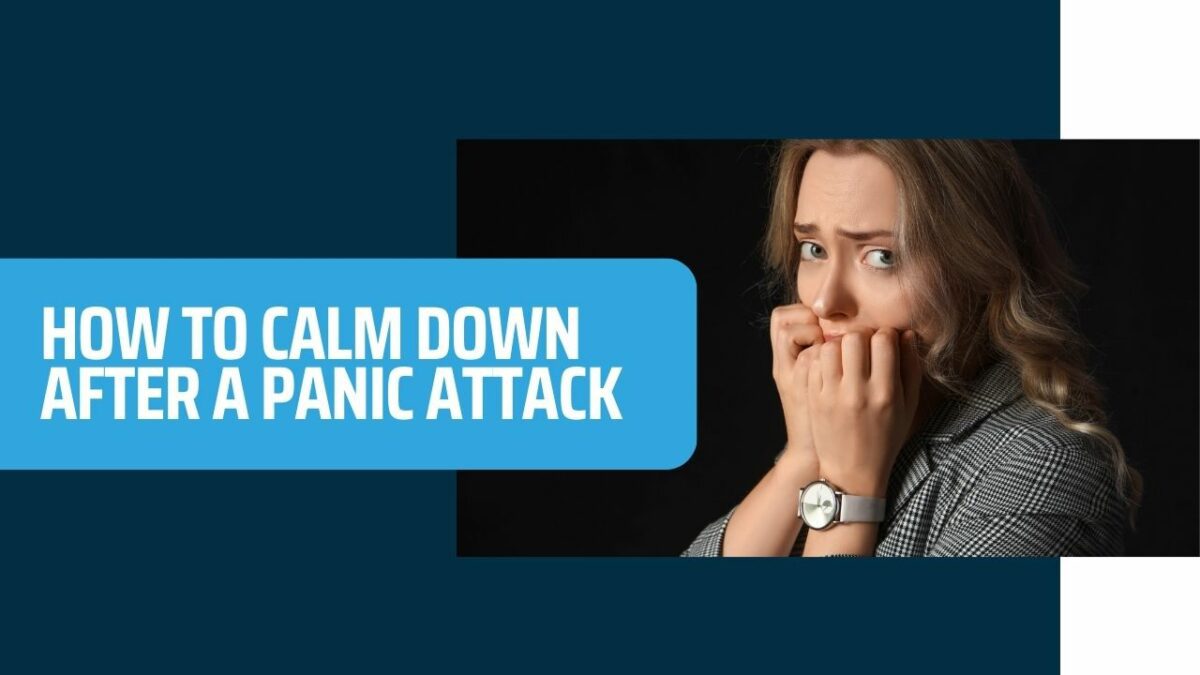
How to Calm Down After a Panic Attack
According to statistics by the National Institute of Mental Health, about 2.7 percent of US adults were diagnosed with a panic disorder in the last year. But this doesn’t include the people who experience a panic attack but aren’t diagnosed with the disorder. Estimates show that between 15 and 30 percent of people will have at least one panic attack over the course of their lifetimes, but only a fraction of them develop the disorder.
But even when you’re not diagnosed with panic disorder, a panic attack can be a scary and difficult experience. Knowing what to do during and after a panic attack not only equips you with the knowledge to help others but yourself as well. Here’s what you should know about managing panic attack symptoms, recovering from one, and telling it apart from a stroke.
What is a Panic Attack?
Panic attacks are brief periods of extreme anxiety that can lead to physical sensations. These episodes can occur suddenly and often in the absence of danger or an apparent threat. They usually accompany symptoms like dizziness, muscle tension, trembling, shortness of breath, and a racing heartbeat.
Meanwhile, a panic disorder is characterized by frequent and unexpected panic attacks. People with the disorder may avoid leaving their homes out of fear that they may experience a panic attack. But with guidance from professionals at a reputable treatment center like URP Behavioral Health, you’ll start seeing many positive changes.
Don’t wait - confidential help is available right now for you or your loved one.
Stroke vs. Panic Attack
While a panic attack on its own can be quite difficult to manage, a more frightening aspect is that they’re quite similar to more serious health concerns. It’s why many people who have experienced a panic attack say that they felt like they were dying or having a heart attack.
When you’ve experienced something that felt like a panic attack, but you’re not entirely sure, only a doctor can tell you if it was a stroke or just anxiety. That being said, there are some ways to tell the two apart.
Rapid vs. Gradual Onset
A panic attack and a stroke can occur rapidly, but strokes tend to come on much faster. In fact, they’re usually instant, while panic attacks take a few minutes to peak before slowly subsiding. The same goes for a mini-stroke, also known as a transient ischemic attack, during which symptoms occur instantaneously. While a mini-stroke lasts for a shorter time, feelings of anxiety come later instead of taking place concurrently.
Occurrence of Other Anxious Symptoms
A stroke occurs when the blood supply going to your brain is blocked or if a blood vessel in your brain bursts. When this happens, parts of your brain suffer from significant damage, causing a loss of brain function. So even though a stroke can result in anxiety and related symptoms, they don’t occur at the same time. But if you’re experiencing multiple symptoms of anxiety, like trembling, rapid heartbeat, and breathlessness, before other physical sensations, then it’s possible that you have anxiety.
Paralysis vs. Muscle Weakness
An important differentiating aspect between a stroke and a panic attack is that the former causes paralysis. Meanwhile, anxiety rarely results in paralysis, even though it does cause difficulty in moving some muscles, especially when you’re hyperventilating and feel weak.
During a stroke, it’s quite common to lose complete control over your muscles. It’s why a common symptom is a facial paralysis, when your face starts drooping, causing you to drool and choke because you can’t move.
Although similar sensations can occur during a panic attack, you’ll still be able to move or change your position. That being said, not all strokes result in paralysis, so you should still seek medical attention.
While these differences are subtle, they help make a distinction between a stroke and a panic attack. As long as you think about your symptoms and how quickly they occurred, you’ll know what’s happening.
How To Calm Down From a Panic Attack?
Before you can calm yourself, look out for symptoms to make sure that it is, in fact, a panic attack. Symptoms include breathlessness, dizziness, nausea, irregular heartbeat, and feeling disorientated, like you don’t know where you are.
Refocus on Your Surroundings
Panic attacks can peak in a few minutes and slowly subside afterward, so it’s crucial to realize what’s happening and let it pass. While this is easier said than done, therapists recommend looking at your surroundings and focusing on a specific object. Consciously thinking about an object and the way it looks or moves can distract you from the symptoms you’re experiencing.
Close Your Eyes
In some situations, you may be in an environment with different triggers that cause you to feel overwhelmed and worsen your panic attack symptoms. To block out the stimuli, make sure you’re in a secure place and close your eyes. That way, you can focus solely on your breathing.
Our team will verify your insurance and design a plan tailored to your needs.
Try a Breathing Exercise
Many people start hyperventilating during, but this can make it harder for the body to calm down from panic attacks. Therapists recommend taking long, deep breaths as a way to alleviate symptoms during a panic attack. In one study that looked at the effects of deep breathing, the results indicated that it improved attention and emotional well-being.
Similarly, researchers have found that deep breathing resulted in lower cortisol levels, which indicates that participants were less stressed. Therefore, trying out a deep breathing exercise can reduce the intensity of your symptoms.
- Start by breathing in slowly and deeply through your nose – try feeling how the air fills up your chest and then your abdomen.
- If it’s difficult to gauge if you’re breathing deep enough, then count slowly from 1 to 5 when you breathe in and until you breathe out.
- Then, breathe out slowly and deeply through your mouth.
Once you start taking deep breaths, you’ll feel your symptoms subsiding.
Become Mindful of Your Surroundings
During a panic attack, you may feel disoriented and as if you’re detached from reality. In this situation, becoming mindful of your surroundings can help you focus on the present and understand your emotional state.
In this situation, you can try focusing on a specific physical sensation, like the texture of your clothes or how your feet are placed on the ground. These sensations bring you back to the present by giving you something tangible to focus on.
How to Cope with Panic Attack Hangover
Also referred to as an adrenaline hangover, a panic attack hangover is a set of symptoms you experience after the attack subsides. During the attack, your adrenaline levels surge because your fight or flight response is activated, resulting in increased energy and alertness.
But as symptoms subside and adrenaline levels go back to normal, your body may feel sore and tired. After a panic attack, it’s common for people to experience the following:
- Fatigue and sleepiness
- Muscle pains and soreness
- Chest pain
- Stomach pain or nausea
Some symptoms may dissipate after a panic attack, but others remain. If you’ve experienced a panic attack, here’s how to cope with an adrenaline hangover.
Get a Change of Scenery
If you’ve just experienced a panic attack in a public place, go home and get under the covers to calm yourself down. If the panic attack occurred while you were at home, step outdoors for a moment and take a walk. Moving to a different space, whether it’s indoors or outdoors, removes you from a stressful environment, while walking can help regulate your breathing.
Have a Snack
Although turning to food as a response to anxiety isn’t recommended, having a snack can help you focus on something as you chew and swallow. The same goes for sipping on some water. Doctors recommend having something with protein as opposed to carb-loaded snacks since the latter can worsen anxiety.
Get Moving
The sudden increase and drop in adrenaline can leave your muscles feeling sore and tired. Getting some exercise, whether you go for a run or take a short walk, can help your body adjust to the change in adrenaline levels.
Get Some Sleep
Panic attacks are mentally and physically exhausting, so it doesn’t come as a surprise that they leave you feeling fatigued. If it’s close to your bedtime, turn in early and get a good night’s rest. And if it’s not, try to take a short nap to re-energize your mind and body.
We’ll help you understand your options and guide you toward care.
How to Help Someone Having a Panic Attack Over the Phone
If a loved one is having a panic attack and you’re not close by, you can still guide them over the phone and help them stay calm.
- Start by telling them that you’re here for them and they can count on you.
- Now that they know you’re present ask if you can call them. If they don’t agree, continue texting them with clear and concise messages.
- Monitor the time and remind them that a panic attack usually peaks within a few minutes, so it’ll all pass soon.
- Remind them to take long, deep breaths through their nose, slowly count to five, and breathe out through their mouth.
- They distract them with a relaxation technique like counting backward from a hundred. As they focus on the activity, their symptoms will subside.
- Ask them to describe their symptoms. Articulating how they feel can help them get in touch with their body’s sensations, which allows them to organize their thoughts.
- Ask what possibly triggered the panic attack. When they can narrow down a potential trigger, they’ll think about the situation logically.
There are various strategies for calm panic attacks and recovering from one after the fact. Nevertheless, speaking to a professional about your symptoms is a great way to understand what you may be going through. Additionally, a therapist can recommend suitable techniques and lifestyle changes to reduce the intensity of future panic attacks and prevent them from recurring.

